Acquiring a new customer can cost around five times more than retaining a current one.
Subscription-based businesses therefore can’t rely entirely on customer acquisition if they want to be cost-effective.
To grow efficiently in the long run, they need to devote resources to customer retention as well. In short, they need to frequently monitor and improve their subscription renewal rates.
Whether you’re trying to remedy a suboptimal renewal rate or aiming to have the best one in the industry, this article will go over seven effective techniques you can use to make sure customers keep on choosing to renew their subscriptions.
- Identify Likely-To-Churn Customers
- Survey Long-Term Customers
- Talk to Your Customer Support Team
- Leverage a Subscription Management Solution
- Offer Incremental Renewal Incentives
- Analyze Your Competitors
- Switch to Direct Debit
- Conclusion
Identify Likely-To-Churn Customers
One of the best ways to increase your subscription renewal rate is to routinely identify customers who are likely to cancel their subscriptions and prevent them from churning.
There are two main ways to spot these dissatisfied customers before they leave: satisfaction surveys and user engagement metrics.
Satisfaction surveys are digital questionnaires you send out to gauge each customer’s level of satisfaction with your product or service.
Sometimes businesses also embed surveys into their website or app so that they appear as pop-ups. Here are some questions to ask on the survey.
It’s likely that you’ve encountered a satisfaction survey while using an app:
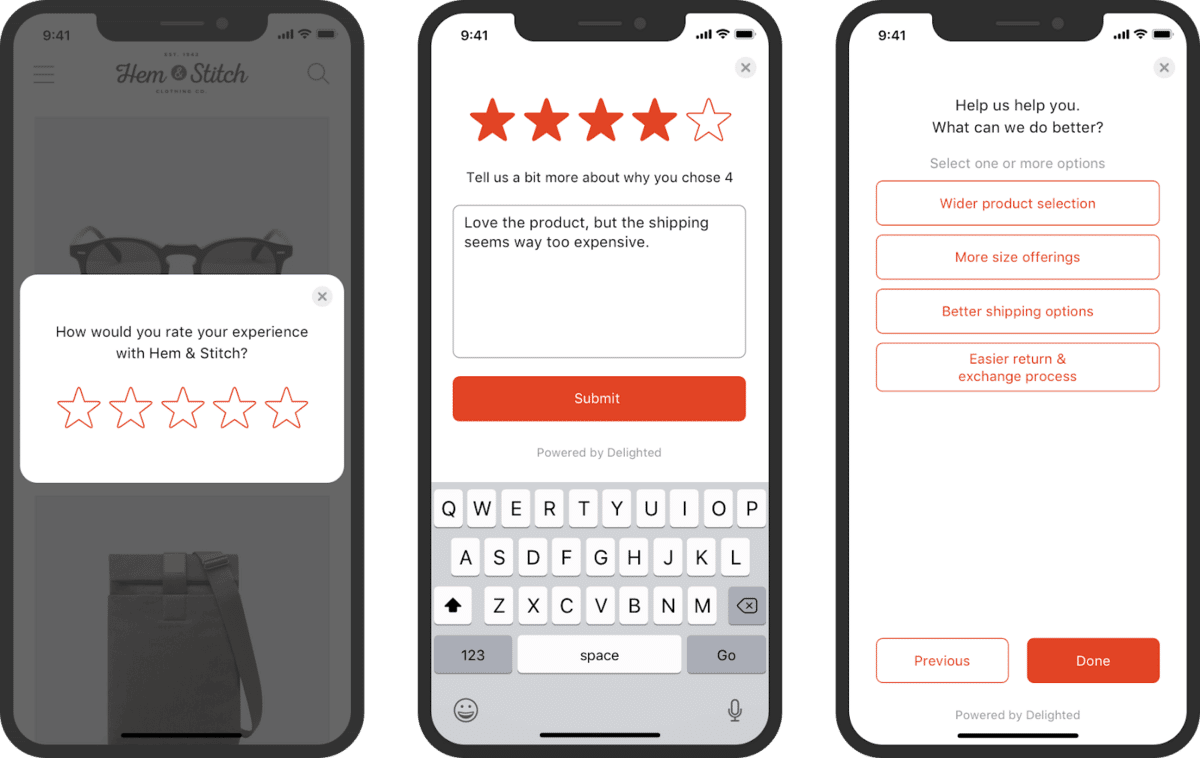
Source: Delighted
Customers who give you less than four stars are people you should keep an eye on, as they might be thinking about canceling.
However, to enhance the accuracy of your prediction, you should also check the customer’s engagement metrics: the second means of identifying potential churners.
Engagement metrics tell you how and how often a customer is using your product. This behavioral data is usually collected in your CRM.
Research has found that lack of usage is the primary driver for customer churn, making it the most important metric to monitor.
So customers using the product infrequently or using only small parts of the product are a churn risk.
For example, if a user hasn’t used the product in 3 weeks, they’re likely wondering if they want to keep investing in this service.
Once you’ve identified customers who are at risk of churning, it’s important to take action to change their minds.
You can do this by sending them targeted content that teaches them about the value of your product and shows them different ways to use it to their advantage.
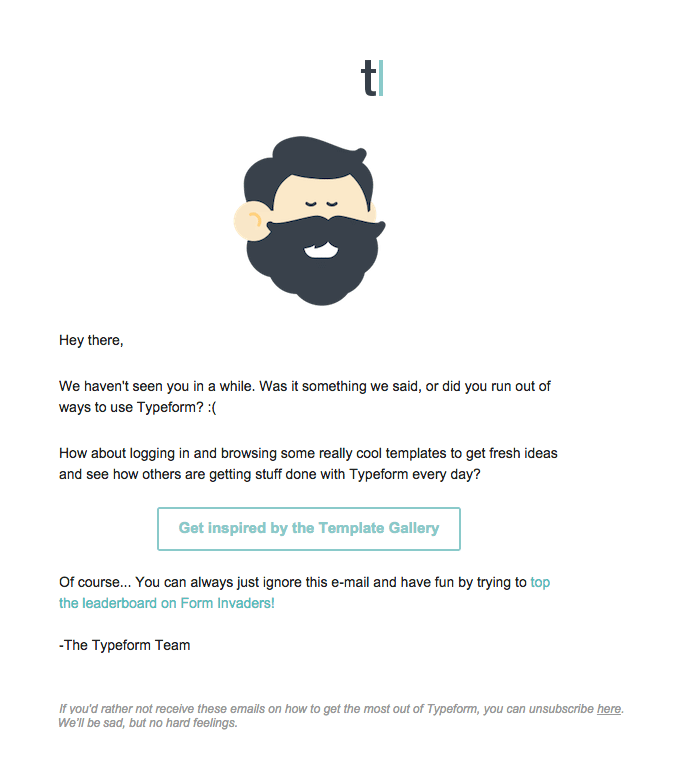
Source: Verifone
For example, the above email from Typeform tries to educate a possible churner about the value of the template gallery in hopes that they remain a happy customer.
In short, spotting potentially unsatisfied customers early and retaining them through targeted communication is an essential practice for improving subscription renewal rates.
Survey Long-Term Customers
Through the good and the bad, long-term customers have stood with you and your service.
Asking these happy customers for feedback can clue you into your business’s strengths and weaknesses and help you understand why customers choose to renew their subscriptions.
Here are some potential questions to ask long-term customers:
| What are some ways we could improve our service? |
| Why do you work with us over the competition? |
| What’s your favorite part about our product and why? |
| What made you choose our product in the first place? |
After surveying enough of them (10 or more), you should start to notice some trends.
For example, you might find that many of your long-term customers rave about one specific feature.
Even just one insight like this can help your renewal rates in many ways.
In that case, you could begin communicating the value of this feature to your other customers, especially those who aren’t using this feature according to their engagement metrics.
You could also update your customer profile to account for this finding.
A more accurate ICP will then enable you to target leads who have the same priorities as your long-term customers and who will therefore likely become long-term customers themselves.
Lastly, other feedback they give you about your customer service, product, and other parts of your business can be used to further improve the customer experience and, as a result, improve your renewal rate.
Talk to Your Customer Support Team
Your customer support team talks to a large number of your customers and therefore likely knows the most common reasons why customers choose to cancel their subscriptions.
So it’s a good idea to survey your customer support staff and ask them to tell you their insights into why customers leave your business.
These explanations can open your eyes to serious issues with your service that you can then fix.
Alongside sending out a digital survey to the entire support staff, talk with some of the agents one on one, as people tend to open up when they’re in an actual conversation.
Once you know these primary issues customers are having, you can develop customer retention initiatives that focus on fixing them.
For instance, if numerous support agents named “overcomplicated product” as a common reason customers give for cancellation, you can then improve your onboarding practices or create more educational and technical content for your knowledge center.
As an added benefit of involving customer support in the effort to find the main causes of churn, your customer support team will feel more valued.
And a motivated customer success team will help your subscription renewal rates.
Leverage a Subscription Management Solution
Businesses looking to improve their subscription renewal rates could benefit from investing in a subscription management solution.
Most of these tools provide useful automation features like automated billing that save your team time, which enables your team to spend more time on high-impact tasks like developing a customer retention strategy.
These tools also give you other features like payment plans which enhance the user experience via personalization.
For example, Regpack’s payment plan feature enables you to create personalized payment plans for your users so that they can pay in the way that works best for them:
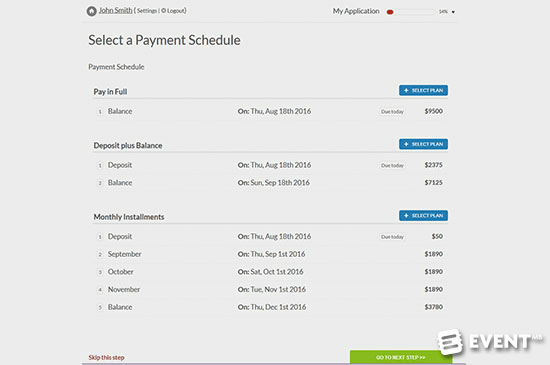
Source: Regpack
And its automated billings feature allows your team to collect payments quickly and easily on a recurring basis, while also communicating to the customer all the information they need in order to feel comfortable paying their bill:
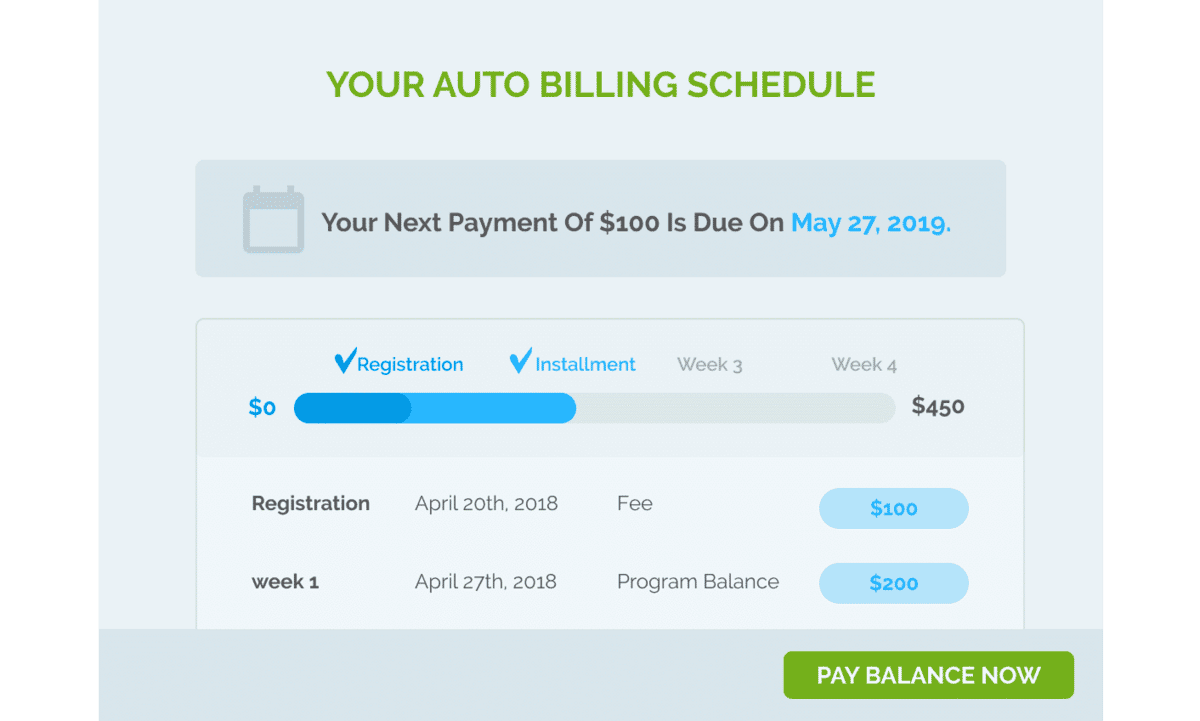
Source: Regpack
As you can see in the example above, the customer can clearly see what they owe now and what they will owe later.
This information makes it easy for them to budget accordingly so that they don’t have to cancel a subscription because of insufficient funds or surprise charges that can make them feel wronged by your brand.
And if the customer uses auto-pay, they don’t have to physically go through the action of typing in their card information and paying you each month, a sometimes psychologically distressing task.
Often, just reducing the number of steps involved in paying for your service can dramatically increase the likelihood a customer renews when the time comes around.
Offer Incremental Renewal Incentives
Incremental renewal incentives are a great way to get customers to choose to keep their subscriptions.
It requires you to strategically send out discounts that increase as the subscription expiration date nears.
Here’s an example:
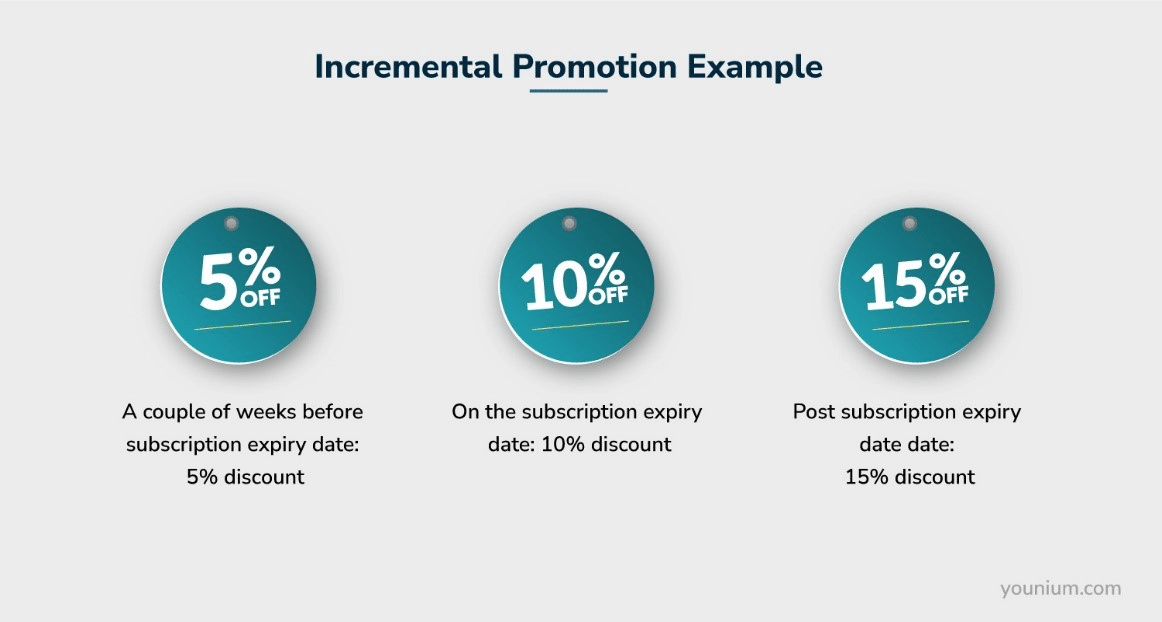
Source: Younium
Of course, you don’t want to always offer these incentives, as every discount you give eats into your business’s revenue.
Therefore, there are two main instances when offering these renewal incentives is a cost-effective option: 1) when customers are likely to churn, and 2) when customers are already lost or lapsed.
We covered how to identify customers who are likely to churn in tip number 2.
As a refresher, they are the customers with below-average engagement metrics (e.g., infrequent users) and/or the customers who give low scores on satisfaction surveys.
Since these customers might already be on the fence about continuing with their subscription, an incremental renewal promotion might be the encouragement they need to stick around for another month.
If they take the deal, you’ll then have the next month to convince them of the value of the product, so that the following month they don’t need another incentive to stick around.
But, you don’t want to offer this deal to all of your potential churners.
Avoid offering them to lost-cause customers who, even if they do take the deal, will require more discounts every other month to remain satisfied and then end up leaving anyway because the product was a bad fit for them in the first place.
The second instance for incentives is with lost or lapsed customers—those no longer with your brand. Target the ones that you believe are still a good fit for your solution and try to re-engage them with a CTA like “we miss you! Re-subscribe for 15% off.”
Consider going after those who involuntarily churned, since it’s likely that they left for reasons other than a poor experience with your business, or those who had canceled for an issue that you have since then fixed.
Used responsibly, an incremental renewal incentive strategy can help you stop customers from churning and re-attract old customers to your business.
Analyze Your Competitors
One common cause of customer churn in the marketplace.
Either a new competitor has come onto the scene and is taking customers or a competitor you know has changed in some way that is making them more attractive to your customers.
Perhaps they lowered the price or added a new desirable feature set.
The best way to keep your business from losing customers to competitors is by educating yourself about your competition and staying up to date on their offers.
You can do this by regularly analyzing their marketing, pricing, and product pages on their websites.
HubSpot has a good guide on how to do an effective competitive analysis:
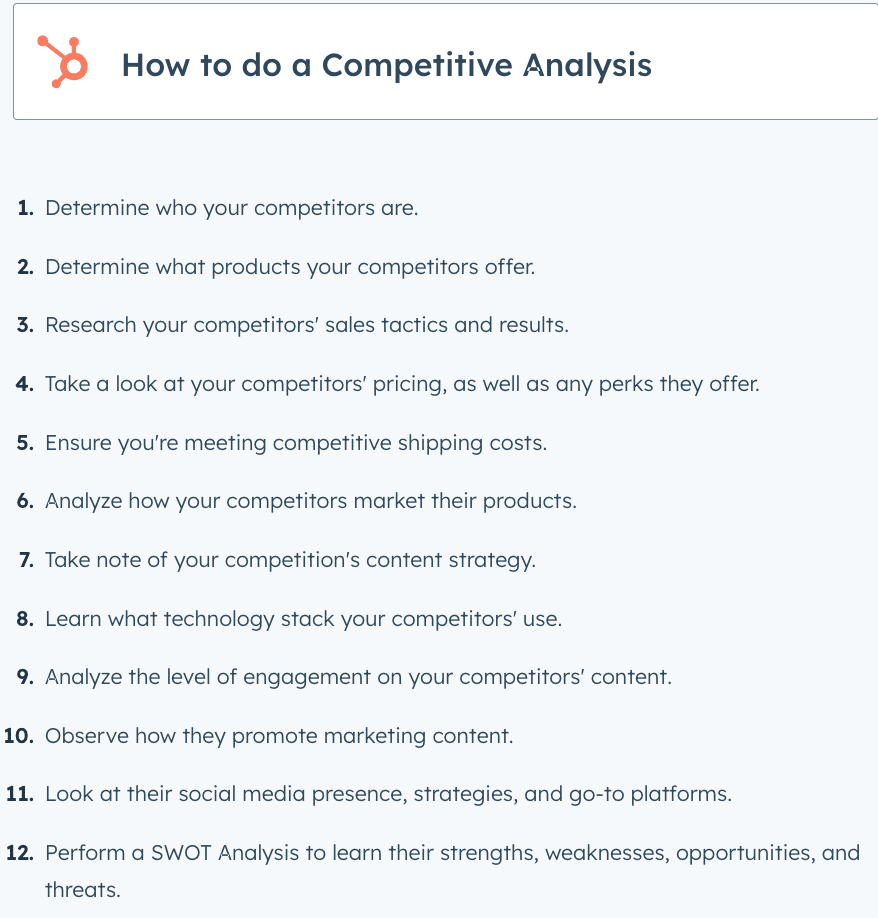
Source: HubSpot
After reviewing your competition, you can either match their tactics which customers are gravitating towards, or create messaging around why a competitor’s new offer is not as glamorous as they make it seem.
Customer service or sales agents can use that messaging in email or phone conversations to save customers who are considering leaving you for the competition.
Some businesses create competitive battlecards and consistently update them as they find out new things about their competition.
Here’s a template you can use to create battlecards for your biggest competitors:
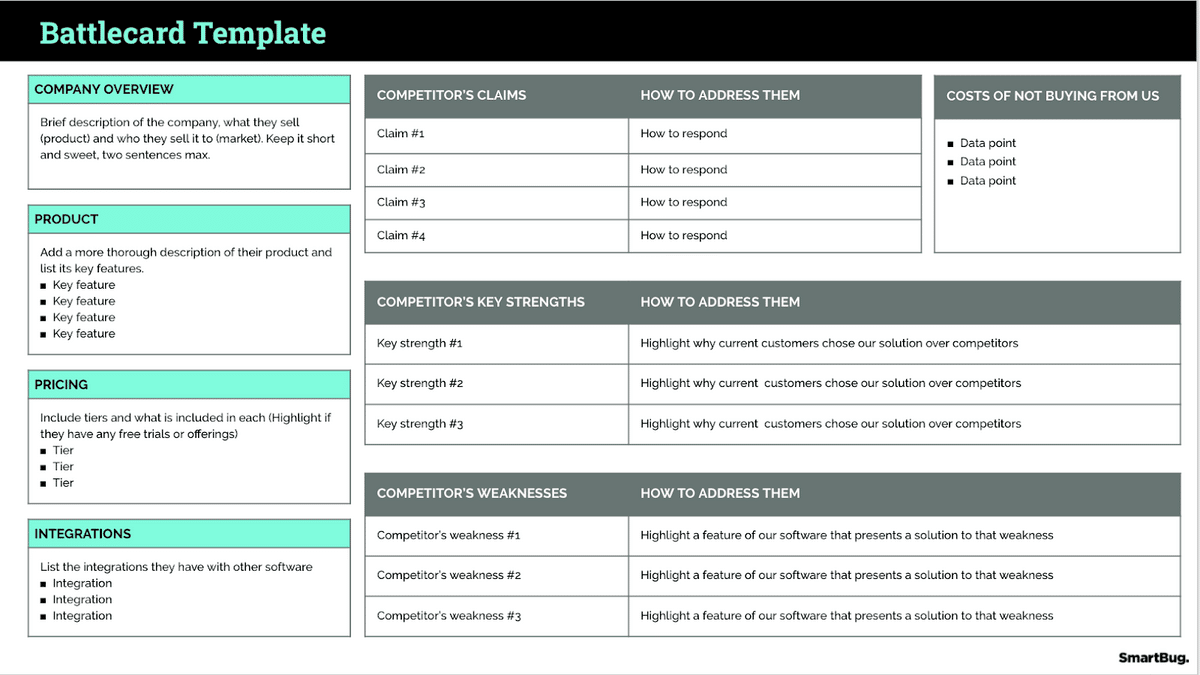
Source: SmartBug
There’s one glaring problem, though. Not every customer that is exploring other options will tell you about it.
So, it’s smart to also sneak some of your competitive language into email nurturing cadences and web copy, without actually talking poorly about your competitors of course.
For example, imagine that you analyzed a competitor and found that they’re offering a new feature set that might be causing customers to switch to them. Imagine also that you have a similar feature in the works.
You’d want to promote this feature to your customers over email and talk about how it’s going to be the best in the market.
This way you’re consistently educating your customers about why you’re better than the competition, and you’ll preempt any flees to the dark side caused by a lack of information or an influx of false information from the competition.
Switch to Direct Debit
Switching to direct debit as a customer payment method is a great way to prevent payment-related involuntary churn—when customer subscriptions are canceled because their payment method failed.
Because bank accounts, unlike cards, don’t expire or get lost, direct debit can help solve this issue.
You won’t lose a customer because that customer is using auto-pay and left their card at a bar and, thinking it’s lost, locked it throughout the entire renewal period.
Many subscription management platforms, including Regpack, offer payment features that enable you to accept direct debit payments from your customers in a secure and seamless manner.
Conclusion
Subscription-based businesses can improve their subscription renewal rates rather quickly by enacting some effective techniques, such as identifying likely-to-churn customers and heading off cancellation, and leveraging subscription management software to make paying less of a hassle for customers.
If you’re looking for a way to better manage your subscriptions and collect debit, credit, and ACH payments automatically, check out how Regpack can help.


















